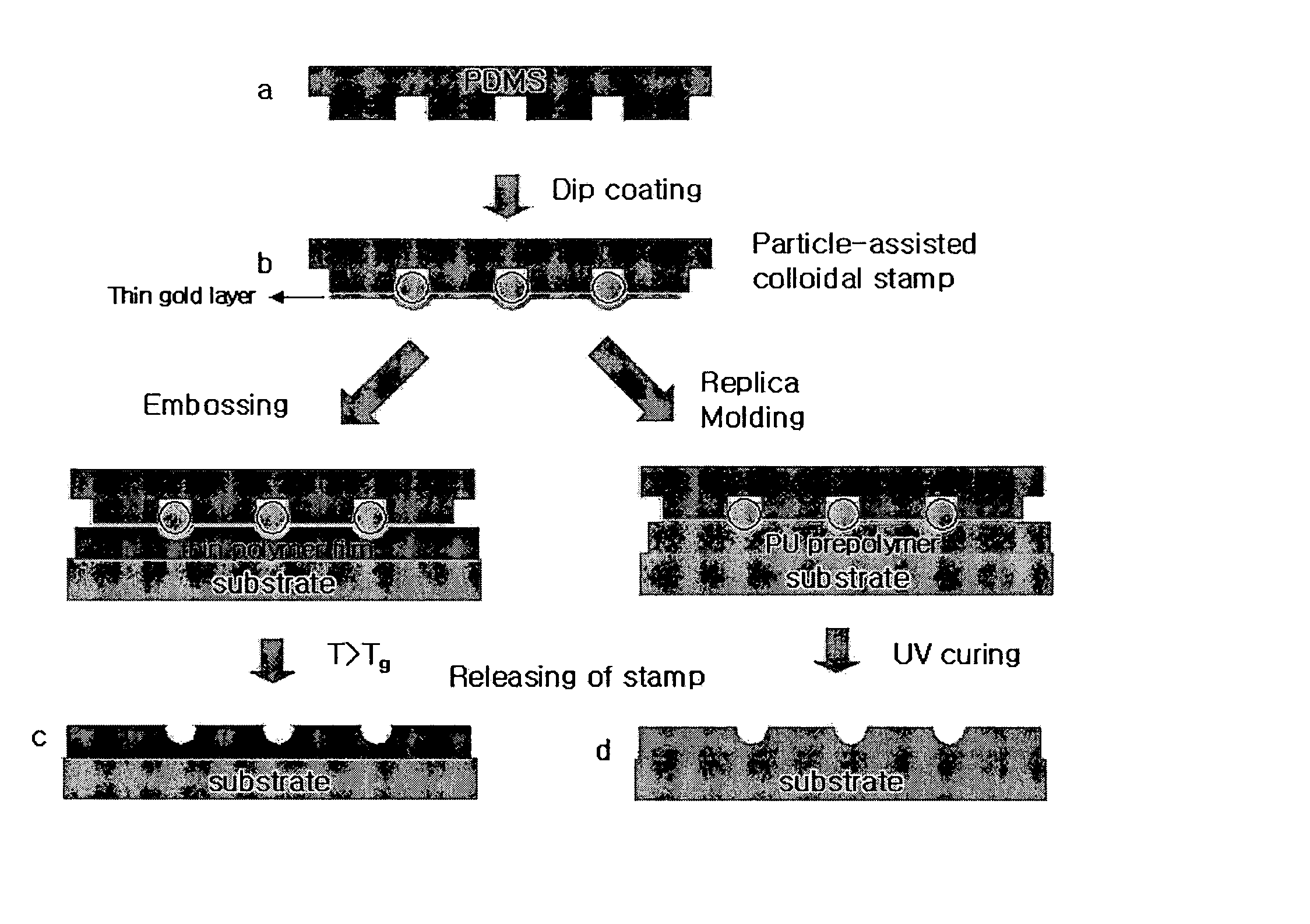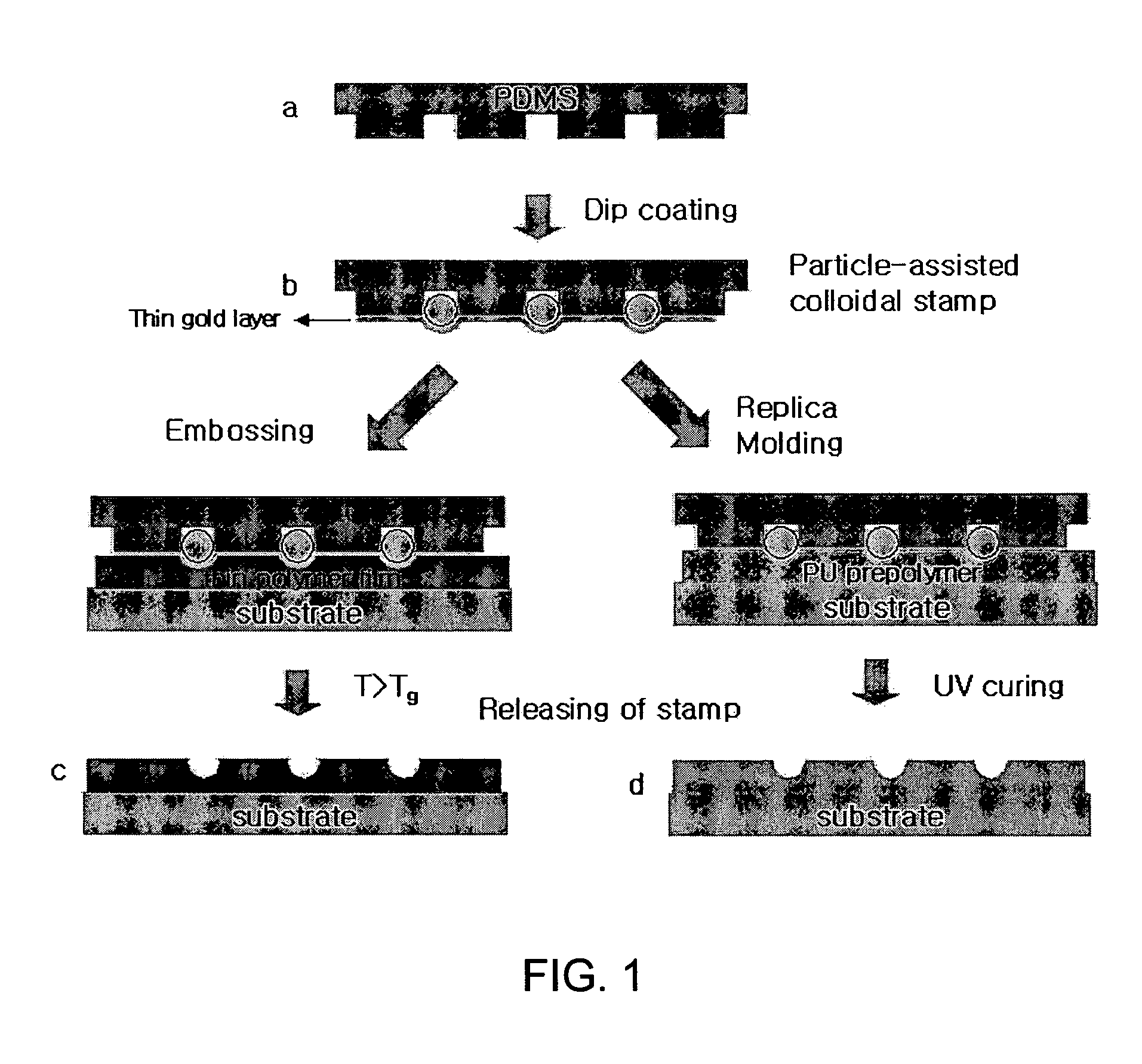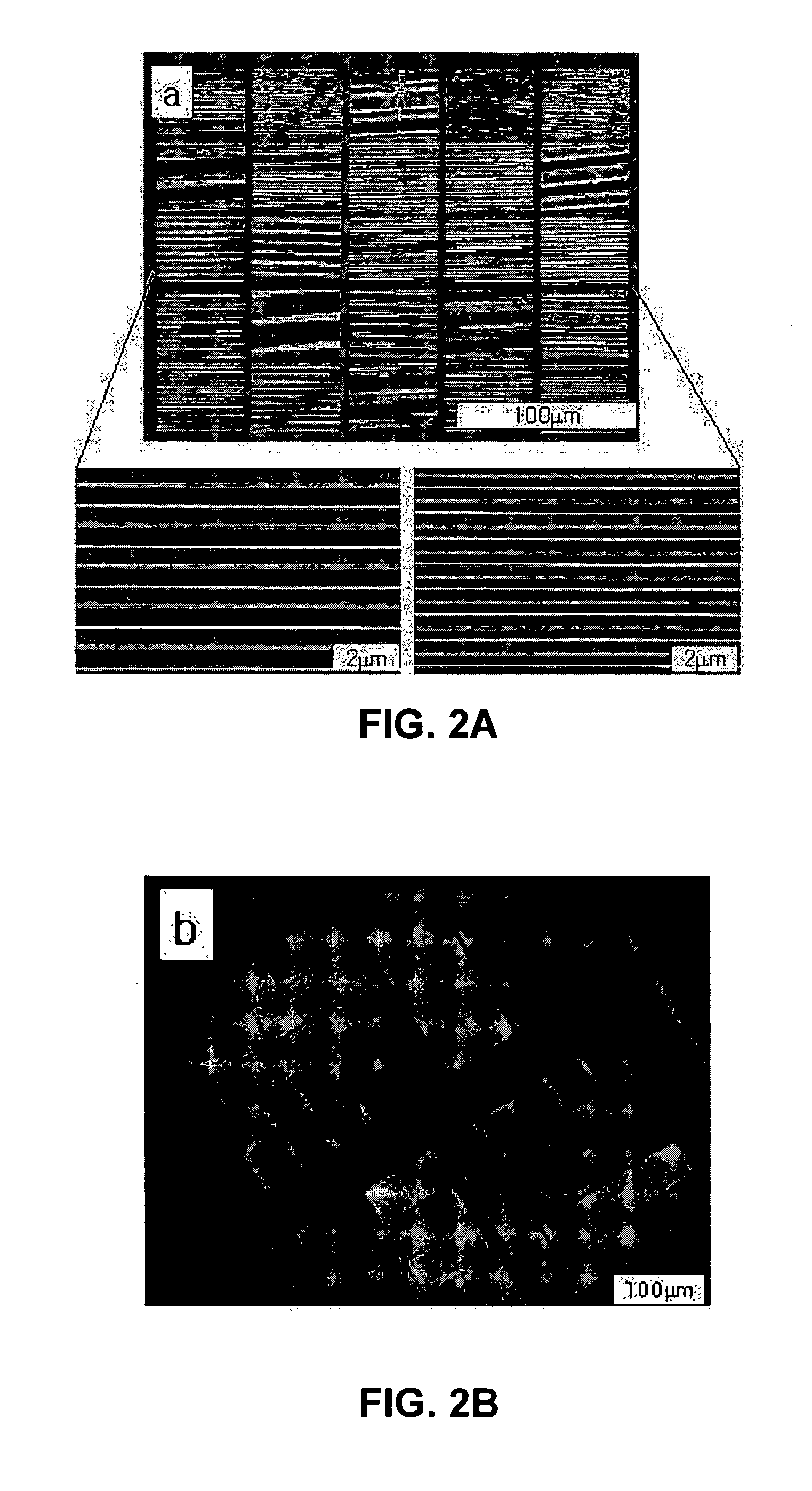Method of fabricating patterned polymer film with nanometer scale
- Summary
- Abstract
- Description
- Claims
- Application Information
AI Technical Summary
Benefits of technology
Problems solved by technology
Method used
Image
Examples
example 1
Preparation of Engraved Porous Polymer Pattern by Replica Molding
[0055]To fabricate a soft polymer mold having line widths of various sizes, a quartz master produced by electron beam lithography process was used. First, polydimethylsiloxane (PDMS) as a soft polymer material was poured on the master and then cured at 80° C. for 1 hour. FIG. 2A is an electron micrograph of the PDMS mold, which was poured to the master, replicated and then completely cured. FIG. 2B is an optical micrograph of the same PDMS mold, which displays different colors (in this figure, as shades of gray) by being scattered by various line widths.
[0056]Thereafter, particles were filled into the patterned soft polymer mold through a dip coating process. As such, the particles included spherical silica particles having a uniform size of 300 nm. The dip coating process was performed at 200 nm / sec. Further, since the dip coating was determined by surface tension and speed, the above parameters should be optimized fo...
example 2
Preparation of Complex Pattern of Polymer and Particles by Replica Molding
[0059]Example 2 was prepared similar to Example 1, with the exception that the gold film was not coated on the stamp. In cases where the stamp was not coated (with the gold film serving to prevent the impregnation of the polymer precursor into the stamp), all the particles were separated from the stamp and buried in the polyurethane polymer film. Therefore, as shown in FIGS. 5A and 5B, a complex pattern of embossed silica particles and polymer results resulted, instead of the engraved polymer pattern.
example 3
Preparation of Polymer Pattern by Nano-imprinting (Embossing)
[0060]Before the nano-imprinting process, about 1 μm sized polystyrene film was spin-coated onto a silicon wafer and then dried. On the polystyrene coating layer, the gold film-coated stamp shown in FIGS. 3A to 3F was placed and allowed to stand at temperatures higher than a glass transfer temperature of 110° C., at which the polystyrene began to flow. After a predetermined time, the stamp was released, and the engraved porous polystyrene patterns shown in FIGS. 6A to 6D were obtained.
[0061]As described hereinbefore, the present invention provides a method of fabricating a patterned polymer film on a nanometer scale. This is advantageous in that polymer patterns having nanometer sized line widths therebetween, which are difficult to realize by a photolithography or electron beam process, can be quickly and inexpensively fabricated at desired positions by use of a self-assembling process and a soft lithography process.
PUM
 Login to View More
Login to View More Abstract
Description
Claims
Application Information
 Login to View More
Login to View More - R&D Engineer
- R&D Manager
- IP Professional
- Industry Leading Data Capabilities
- Powerful AI technology
- Patent DNA Extraction
Browse by: Latest US Patents, China's latest patents, Technical Efficacy Thesaurus, Application Domain, Technology Topic, Popular Technical Reports.
© 2024 PatSnap. All rights reserved.Legal|Privacy policy|Modern Slavery Act Transparency Statement|Sitemap|About US| Contact US: help@patsnap.com










